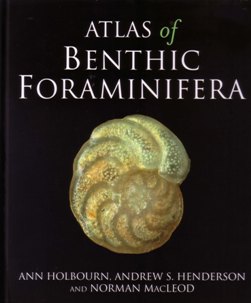 Taxonomy is the basis of all micropalaeontological work. Illustrations are fundamental to this – especially for those unable to visit type collections. For many years most foraminiferologists could only identify their specimens using previous workers’ drawings or frequently low quality photomicrographs. Some early drawings were excellent – see, for example, the plates in H. B. Brady’s Challenger Report.
Taxonomy is the basis of all micropalaeontological work. Illustrations are fundamental to this – especially for those unable to visit type collections. For many years most foraminiferologists could only identify their specimens using previous workers’ drawings or frequently low quality photomicrographs. Some early drawings were excellent – see, for example, the plates in H. B. Brady’s Challenger Report.
Others were not, however, being by workers with, like me, limited artistic skills. This may have led to a proliferation of named species, workers being unwilling to use a name on the basis of a poor illustration. It was once thought that the introduction of the scanning electron microscope had overcome the problem of illustration, the SEM producing clear, objective illustrations. This spurred, for example, van Morkhoven et al.’s (1986) compendium of Cenozoic deep-water benthic foraminifera. However, the SEM is not without challenges.
It cannot illustrate the specimens’ internal details, which limits its usefulness for illustrating, for example, species of Cibicidoides and Amphistegina. Perhaps it was this that encouraged van Morkhoven et al. to include the type illustrations – usually drawings – in their compendium. Furthermore, the SEM photograph does not replicate what is seen under an optical microscope.
The development of digital microscopes and stacking software for digital micrographs has opened up a new avenue for illustrating specimens that replicates what is seen under the optical microscope. The Atlas if Benthic Foraminifera uses this technology and the result is magnificent. It contains clear, crisp digital photographs of 300 common benthic foraminiferal species, occasionally augmented with SEM images. Although the specimens photographed are not holotypes, details of the type specimen, type level and type locality are given. Type illustrations are not reproduced; however, type illustrations of some of the species were illustrated by van Morkhoven et al., so I have found it useful to use both books together. Biogeographic and palaeobathymetric details are provided. Ages are given also, although these are a little generalised.
Perhaps stating the ages in terms of planktonic foraminiferal zones would have been useful. Bulimina, Cibicidoides and Uvigerina are particularly well illustrated, although I was surprised that U. peregrina was excluded. The Atlas claims to illustrate deep-sea species, so the inclusion of intertidal Trochammina inflata was also a surprise.
I would highly recommend this reasonably-priced, painstakingly assembled book to all foraminiferal micropalaeontologists. It is sure to be a standard reference for decades to come.
Brent Wilson, Trinidad
ATLAS OF BENTHIC FORAMINIFERA
Ann Holbourn, Andrew S. Henderson and Norman Macleod
Published by: Wiley-Blackwell; Publication date: 2103 ISBN: 978-1-118-38980-5 List price: £149.95 654 pp.
www.wiley.com